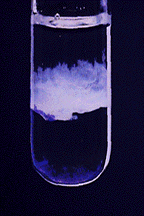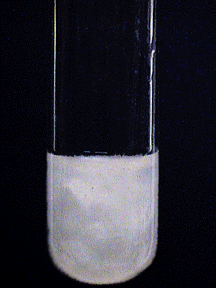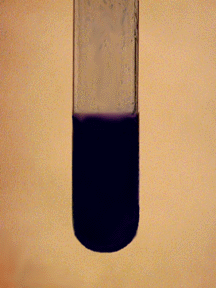
Magnesium, Mg2+
Most common oxidation state: +2
M.P. 650o
B.P. 1120o
Density 1.74 g/cm3
Characteristics: This silvery metal is quite active, reacting slowly with boiling (but not cold) water to give hydrogen and the rather insoluble magnesium hydroxide, Mg(OH)2. It combines easily with oxygen and at high temperatures reacts with such nonmetals as the halogens, sulfur, and even nitrogen.
Characteristic reactions of Mg2+:
Magnesium ion rarely forms complex ions. All salts are white; most are soluble in water.
Aqueous Ammonia:
Aqueous ammonia precipitates white gelatinous Mg(OH)2:

Ammonium salts dissolve Mg(OH)2 or prevent its precipitation, when added to aqueous ammonia. This is a buffer effect and shifts the pH to a lower value, causing a shift of the precipitation equilibrium to the left.
Sodium Hydroxide:
Sodium hydroxide gives the same precipitate as aqueous ammonia:

Sodium Monohydrogen Phosphate:
Na2HPO4 gives a characteristic crystalline precipitate in an ammonia-ammonium chloride buffer.

Magnesium Reagent:
Solid magnesium hydroxide forms a blue "lake" with a dilute solution of 4-(p-nitrophenylazo)resorcinol (magnesium reagent).

No Reaction:
Cl-, SO42-